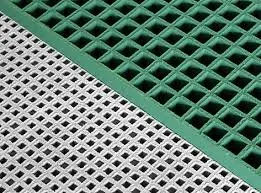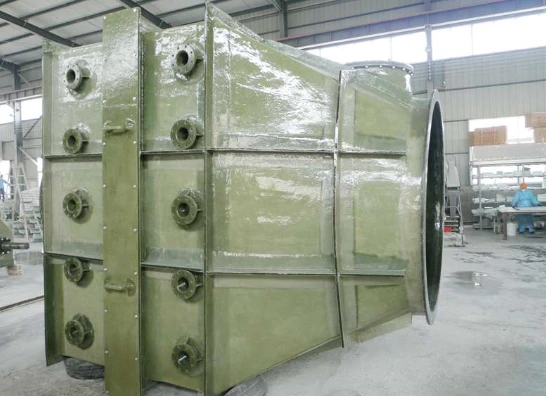
-
 Afrikaans
Afrikaans -
 Albanian
Albanian -
 Amharic
Amharic -
 Arabic
Arabic -
 Armenian
Armenian -
 Azerbaijani
Azerbaijani -
 Basque
Basque -
 Belarusian
Belarusian -
 Bengali
Bengali -
 Bosnian
Bosnian -
 Bulgarian
Bulgarian -
 Catalan
Catalan -
 Cebuano
Cebuano -
 China
China -
 China (Taiwan)
China (Taiwan) -
 Corsican
Corsican -
 Croatian
Croatian -
 Czech
Czech -
 Danish
Danish -
 Dutch
Dutch -
 English
English -
 Esperanto
Esperanto -
 Estonian
Estonian -
 Finnish
Finnish -
 French
French -
 Frisian
Frisian -
 Galician
Galician -
 Georgian
Georgian -
 German
German -
 Greek
Greek -
 Gujarati
Gujarati -
 Haitian Creole
Haitian Creole -
 hausa
hausa -
 hawaiian
hawaiian -
 Hebrew
Hebrew -
 Hindi
Hindi -
 Miao
Miao -
 Hungarian
Hungarian -
 Icelandic
Icelandic -
 igbo
igbo -
 Indonesian
Indonesian -
 irish
irish -
 Italian
Italian -
 Japanese
Japanese -
 Javanese
Javanese -
 Kannada
Kannada -
 kazakh
kazakh -
 Khmer
Khmer -
 Rwandese
Rwandese -
 Korean
Korean -
 Kurdish
Kurdish -
 Kyrgyz
Kyrgyz -
 Lao
Lao -
 Latin
Latin -
 Latvian
Latvian -
 Lithuanian
Lithuanian -
 Luxembourgish
Luxembourgish -
 Macedonian
Macedonian -
 Malgashi
Malgashi -
 Malay
Malay -
 Malayalam
Malayalam -
 Maltese
Maltese -
 Maori
Maori -
 Marathi
Marathi -
 Mongolian
Mongolian -
 Myanmar
Myanmar -
 Nepali
Nepali -
 Norwegian
Norwegian -
 Norwegian
Norwegian -
 Occitan
Occitan -
 Pashto
Pashto -
 Persian
Persian -
 Polish
Polish -
 Portuguese
Portuguese -
 Punjabi
Punjabi -
 Romanian
Romanian -
 Russian
Russian -
 Samoan
Samoan -
 Scottish Gaelic
Scottish Gaelic -
 Serbian
Serbian -
 Sesotho
Sesotho -
 Shona
Shona -
 Sindhi
Sindhi -
 Sinhala
Sinhala -
 Slovak
Slovak -
 Slovenian
Slovenian -
 Somali
Somali -
 Spanish
Spanish -
 Sundanese
Sundanese -
 Swahili
Swahili -
 Swedish
Swedish -
 Tagalog
Tagalog -
 Tajik
Tajik -
 Tamil
Tamil -
 Tatar
Tatar -
 Telugu
Telugu -
 Thai
Thai -
 Turkish
Turkish -
 Turkmen
Turkmen -
 Ukrainian
Ukrainian -
 Urdu
Urdu -
 Uighur
Uighur -
 Uzbek
Uzbek -
 Vietnamese
Vietnamese -
 Welsh
Welsh -
 Bantu
Bantu -
 Yiddish
Yiddish -
 Yoruba
Yoruba -
 Zulu
Zulu
Feb . 13, 2025 14:49
Back to list
frp fitting
In the realm of industrial applications, the term FRP fitting has become increasingly crucial. Fiber Reinforced Plastics (FRP) fittings are engineered components used widely in industries such as chemical processing, water treatment, and oil and gas due to their superior properties over traditional materials. Here, we delve into various aspects of FRP fittings that contribute to their rising popularity and the essential considerations when selecting these components for industrial use.
The design versatility of FRP fittings allows for customization to meet specific industrial needs. Manufacturers can tailor these fittings to various shapes, sizes, and specifications, ensuring seamless integration into existing infrastructure. The ability to fabricate FRP fittings to detailed requirements enhances their functionality and operational efficiency, providing a tailored solution that conventional materials might not offer. Selecting the right FRP fitting, however, requires a comprehensive understanding of the operational environment and specific application requirements. Expertise in materials engineering is essential to assess factors such as temperature ranges, chemical exposure, pressure levels, and load expectations. Furthermore, adherence to industry standards and certifications is imperative to ensure that the fittings meet safety and quality benchmarks. To gain the maximum performance from FRP fittings, it is vital to collaborate with manufacturers and suppliers who possess authoritative knowledge and proven experience in the field. These partnerships can provide valuable insights, from initial design considerations to installation guidance and post-installation support. Trust in both product and supplier ensures that the FRP fittings will perform optimally throughout their lifecycle. In conclusion, FRP fittings represent a significant advancement in industrial material science. Their unique properties address the limitations of traditional materials, offering enhanced corrosion resistance, strength, and customization options. For industries focused on efficiency, durability, and cost-effectiveness, FRP fittings present a viable solution. As with any advanced material, leveraging expert knowledge and maintaining a trustworthy partnership with your suppliers will ensure that these fittings meet and exceed your operational demands.


The design versatility of FRP fittings allows for customization to meet specific industrial needs. Manufacturers can tailor these fittings to various shapes, sizes, and specifications, ensuring seamless integration into existing infrastructure. The ability to fabricate FRP fittings to detailed requirements enhances their functionality and operational efficiency, providing a tailored solution that conventional materials might not offer. Selecting the right FRP fitting, however, requires a comprehensive understanding of the operational environment and specific application requirements. Expertise in materials engineering is essential to assess factors such as temperature ranges, chemical exposure, pressure levels, and load expectations. Furthermore, adherence to industry standards and certifications is imperative to ensure that the fittings meet safety and quality benchmarks. To gain the maximum performance from FRP fittings, it is vital to collaborate with manufacturers and suppliers who possess authoritative knowledge and proven experience in the field. These partnerships can provide valuable insights, from initial design considerations to installation guidance and post-installation support. Trust in both product and supplier ensures that the FRP fittings will perform optimally throughout their lifecycle. In conclusion, FRP fittings represent a significant advancement in industrial material science. Their unique properties address the limitations of traditional materials, offering enhanced corrosion resistance, strength, and customization options. For industries focused on efficiency, durability, and cost-effectiveness, FRP fittings present a viable solution. As with any advanced material, leveraging expert knowledge and maintaining a trustworthy partnership with your suppliers will ensure that these fittings meet and exceed your operational demands.
Next:
Related Products
Latest news
-
High-Quality Fiberglass Car Bodies Durable GRP Car & Boat Body SolutionsNewsJul.08,2025
-
High-Quality Fiberglass Dual Lamination Product Manufacturer Durable FRP & GRP Dual Lamination SolutionsNewsJul.08,2025
-
Rectangular Tank with Dimensions for GRP Calculation Custom Fiberglass GRP Rectangular TanksNewsJul.07,2025
-
High-Quality Fiberglass Weir Custom FRP Weir & Fiberglass Tanks ManufacturerNewsJul.07,2025
-
CPVC FRP Pipe A Reliable Choice for Industrial Applications High Strength & Corrosion ResistanceNewsJul.07,2025
-
Fiberglass Scrubber for Effective Cleaning and Stain Removal – Superior Performance in Various ApplicationsNewsJul.06,2025









